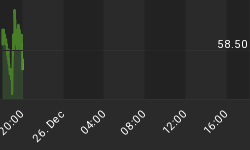The following is part of Pivotal Events that was published for our subscribers Thursday, October 2, 2008.
SIGNS OF THE TIMES:
Earlier In The Year:
"Commodity Bull Market In the Fourth Inning of a Nine-Inning Baseball Game"
- Jim Rogers, Barron's, March 31, 2008
"Avoid Dollar At All Costs"
- Jim Rogers, Bloomberg. July 30, 2008
"There is a possibility of a "melt-up" by the US equity markets between May and September. Sell in May and go away isn't reliable."
- Technical analyst, Financial Post, April 12, 2008
More Recently:
"Commodities Take a Brutal Beating"
"A key index tracking commodities shipments [Baltic] has fallen 52% since the start of [September]."
- Wall Street Journal, October 1, 2008
"MARKETS IN FREE FALL"
- National Post, September 30, 2008
* * * * *
Stock Markets: At times like this the old saying about the investment business is "Oh well, it's indoor work with no heavy lifting".
Actually, policymakers are into more than a little heavy lifting these days. This is distinctive from their touts from around 18 months ago when just the right change in Fed funds would "keep the recovery going". Then it was that just the right change would prevent a recession, and now it's that only a massive transfer of toxic risk to the taxpayers will save said taxpayers from something worse.
It is worth reviewing that once a massive credit bubble reaches its gossamer limit and breaks there is no way of preventing the consequent contraction. Indeed, financial history is a "due diligence" on all of the grand schemes of financial adventurers in the markets as well as in policymaking.
At this stage of a disaster, the fact that interventionist economics has done very little research on previous great booms and busts should be daunting to their own efforts. But no, their efforts seem now desperately dedicated to proving theories of manipulation that market forces methodically destroy.
This makes the taxpayer revolt against the "bailout" rather interesting. In various articles we have outlined how politics goes to the left during a commodity boom and with the bust politics trends back to the middle.
The last important commodity high was in 1988 and in symbolizing one of the greatest political reforms in history the Berlin Wall came down in 1989. That was an attempt to end or reduce in communist countries so many state-run monopolies.
In the West the most destabilizing monopoly has been a national currency based upon the silly concept of a national economy and credit market. This has become a plaything of ambitious intellectuals who have not accepted any discipline on their experiments to "manage" all the folks out there that really make up "the economy".
While at the moment focused upon the massive bailout, the protest could be the start of a significant re-evaluation of all social institutions built up or corrupted by undisciplined authoritarians.
Of these, the most insidious has been the long experiment in a non-convertible currency. This combined with reckless accommodation by the Fed has created the biggest financial mania in history. It is coming apart big time and the public's success in dramatically reducing the terms of the "rescue" would be an important step on the path to political reform.
Whether any scheme is imposed or not, it won't prematurely end the contraction.
Near Term: We have been looking for this phase of the bear market to complete by around late October. One tool has been the often-seen 55-day plunge to market capitulation, and as we have been noting on the Nasdaq this counts out to late October. Also there is the seasonal component whereby most of the great fall liquidations have ended in late October.
Often at important bottoms the ChartWorks registers thousands of stocks showing Downside Capitulations, along with the senior indexes.
Not yet.
INTEREST RATES
Credit Spreads: In a manner of speaking, the fully metabolized material has hit the fan.
Our September 11 edition observed: "Inevitably money market spreads will widen to reflect a growing realization of risk". This was after noting that the massive central bank "stimulus" was flooding the money markets, which was artificially narrowing spreads. Also we have been noting that interested parties in London were deliberately reporting Libor at below actual rates that would clear the market. This was done to prevent bad things happening to all the instruments that are priced off Libor.
Libor had been "fixed" at around 280 bps since mid June, and on September 15 it was at 282 bps, the next day at 288 bps, then the next at 306 bps. That was fast, but after a few days at 320 bps the move became serious, such that it jumped to 376 on Friday. Now it is at 415 bps.
Similarly, dealer commercial paper went from "fixed" at 275 bps to 495 bps, and the bill yield has plunged to 0.0% (no typo). For those who focus upon GDP and Fed Funds, this is a severe credit contraction that ranks with the worst in the past. As we have been mentioning through the summer, examples include the contractions following the 1929, 1873, and 1825 bubbles.
One of the features of every great bubble is sonatas about credit innovation and soaring commodities. And then the bleak contraction is accompanied by a number of gloomy adagios about remorse. After swanning around boasting about their policies suddenly chagrined politicians get busy with recriminatory legislation.
It is worth recalling that the SEC and Glass-Steagall were imposed in the 1930s to prevent another 1929 from happening. Graham and Dodds published their book, Security Analysis, in 1934 to hopefully prevent investment managers from committing the follies of 1929.
Oh yeah, as part of the violence money market spreads have followed the trend set by long rates and have widened.















